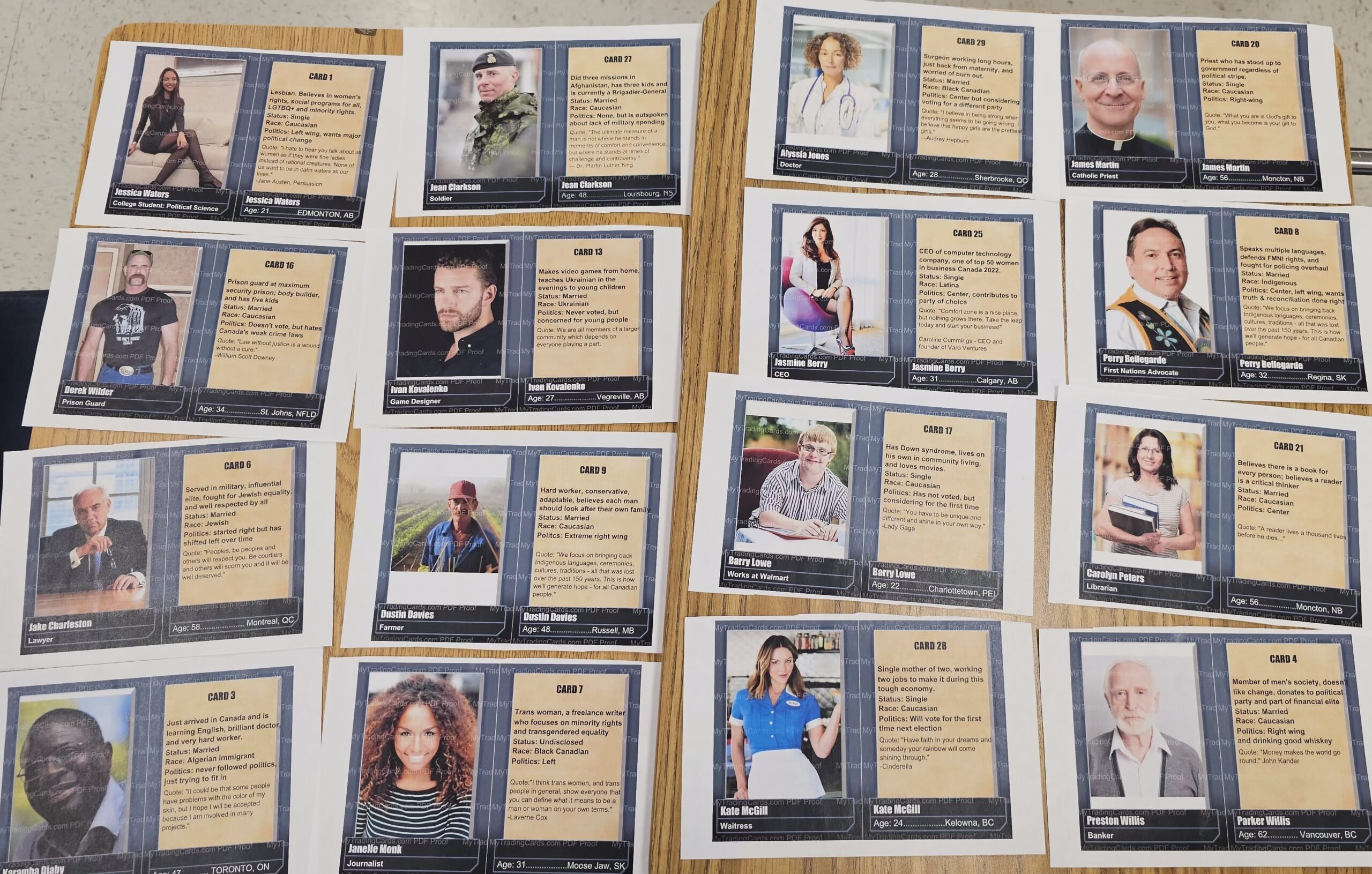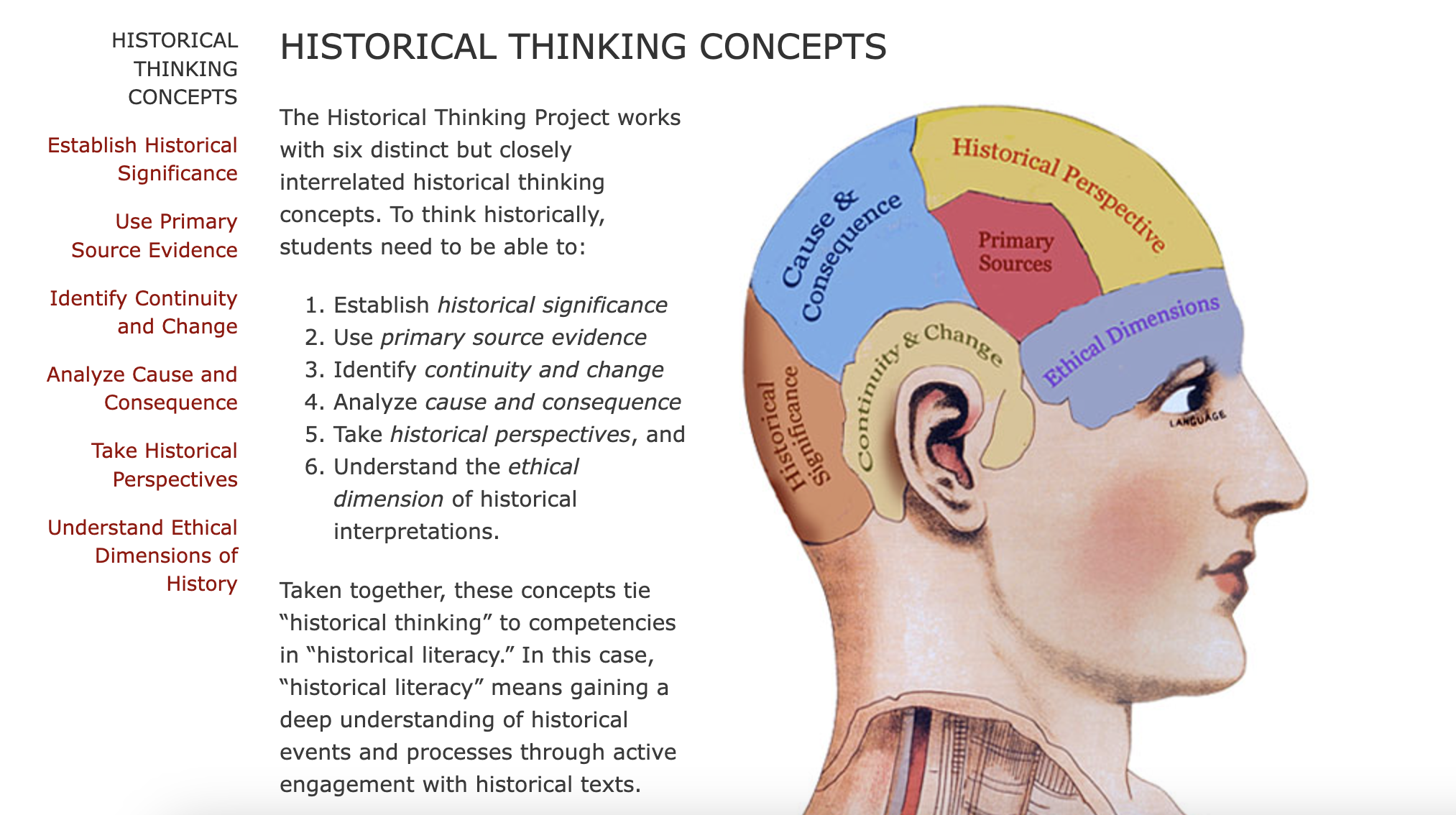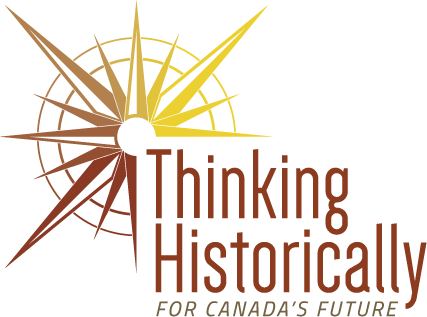Dwayne Jeffery,
High School Teacher
Dwayne Jeffery teaches grades 10-12 History and has been teaching for 28 years. He has taught at Lloydminster Comprehensive High School, a public high school in Lloydminster, Saskatchewan for the past 21 years. While Dwayne’s school is part of a Saskatchewanian school division, the town of Lloydminster straddles the Alberta-Saskatchewan border, and is technically located in both provinces. As a result, Dwayne’s students come from both sides of the provincial border. This unique location means that Dwayne and his colleagues must familiarize themselves with both the Alberta curriculum and the Saskatchewan curriculum. The Lloydminster community is predominantly white and conservative; however, there is a small Filipino population in the city. Dwayne emphasized the value in teaching Canadian history in his unique location as it has the potential to foster shared national identity.

Lloydminster Comprehensive High School
Lloydminster, Saskatchewan

Teaching & Learning
Every year, Dwayne and his students look forward to the museum exhibition project, which he designed, and which has been nominated for a Governor General’s Award.
With this project, students curate a museum exhibit with artifacts about a topic of their choice. This gives students flexibility to pursue their interests while demonstrating their historical thinking skills.
Dwayne explained that students have chosen a wide variety of creative and fascinating project topics, from “sports, culture, history, and more.” As he shared, “We had one on aviation last time. It was the first time we had that one. And we had one on uranium last semester. My favorite one ever was two girls who focused on dog sled mail in the Yukon.”
Allowing students the freedom to choose their own topic both engages student interests and keeps the project interesting for Dwayne to teach year after year.
As Dwayne explained, reading history essays over the years of his career became a bit redundant. But “this project leaves me feeling rejuvenated and feeling like kids can tell stories and learn history in a different way.”
After completing their projects, students’ work is displayed in the school library for other students and staff members to read and enjoy. Dwayne’s students greatly enjoy sharing their hard work with others in the community through their exhibits.
“There’s a sense of pride. Because most kids do a good job on this, and they find something they have a passion for. The best ones, not surprisingly, are ones that are personal. Those are the ones where you really see the pride.”

Civic Engagement
One of Dwayne’s primary goals as a history teacher is to teach students to be civically engaged.
Dwayne incorporates civic engagement into his teaching in many ways, including through mock elections. To simulate a historical election in a straightforward way, Dwayne randomly gives each student in his class a card describing a hypothetical person. Then, taking on the identity on the card, the class votes on three political issues based on how they would assume their assigned hypothetical person would vote.
It is important for Dwayne to teach his students that voting has not always been available to all people. As he explained, “I have everybody stand up. Then I say, ‘Based on your assigned hypothetical identity, if you have a disability, sit down. If you’re LGBTQ sit down. If you are a minority, sit down. If you’re a woman, sit down’…And then when there are only five or six of the thirty people standing up, we re-vote. And those six, of course, are conservative men. So, we look at how voting matters and how it has evolved over time.”
Dwayne has found that the students he has taught recently seem to have a better understanding of politics than those in previous generations. As students have more developed political opinions, Dwayne has found he can lead more lively political discussions. Dwayne does not shy away from polarizing topics, but instead encourages students to share their political opinions and discuss them respectfully with each other.
Dwayne shared, “I tell kids, ‘If you only learn one thing, it is the importance of voting in the next election.’ Right? And they always ask ‘Well, who do you want us to vote for?’ I say, ‘I don’t care. I mean, I’m 52, whoever wins the next election won’t impact my life as dramatically as it’s going to impact your life for 40 years.’”

Historical Thinking
The Big Six historical thinking concepts have a big impact on how Dwayne teaches history, and attending Big Six workshops has helped Dwayne develop the knowledge and skills to structure his teaching around historical thinking.
As Dwayne explained, “I was already using all the Big Six concepts in theory, but labeling it has changed how I teach, changed how I assess, and most importantly, made it easier for students to understand history.”
By framing his pedagogy around the Big Six concepts, Dwayne can ensure students develop thinking skills that they can use throughout their education in history class and beyond. These skills, including analyzing historical significance and continuity and change, help students understand how to think about history rather than memorizing names and dates.
Dwayne explained that “although everything is biased, and history can be super biased, the Big Six concepts actually help you be less biased.” As Dwayne put it, using these historical thinking concepts not only help teachers think “in a big picture way” when planning their units and lesson, they also “align kids’ thinking in this big picture way.”
While it may initially be challenging for students to grasp historical thinking concepts, Dwayne knows there are long term benefits when students can understand history through different lenses.
As Dwayne explained, “My students are better because of Big Six historical thinking.”
Co-created by Dwayne Jeffery and Abigail Smith
